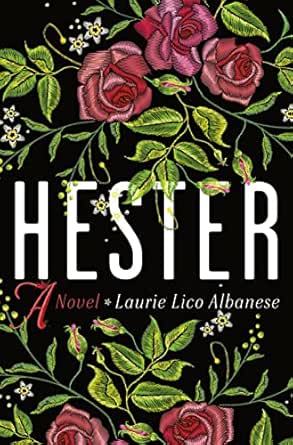3 Stars
In this novel, the author imagines that Hester Prynne, the protagonist of The Scarlet Letter, was inspired by a woman Nathaniel Hawthorne actually encountered.
Isobel MacAllister experiences synesthesia so letters and sounds are associated with colours. Her mother warns her to keep her experiences of colours a secret for fear of being accused of witchcraft. She marries Edward Gamble, and circumstances cause them to sail to Salem, Massachusetts, in 1829, to begin a new life. When Edward leaves her there alone and virtually penniless while he sets off to become rich, Isobel uses her skills as an embroiderer and seamstress to support herself. Nineteen-year-old Isobel meets 24-year-old Nat Hathorne, and the two are immediately attracted to each other.
I liked the premise of the novel but I was not overly impressed with the execution. I found the book unnecessarily long; its pace can only be described as glacial. The constant references to Isobel’s synesthetic experiences become tedious. The focus also seems scattered. It’s supposed to be about the inspiration for Hester Prynne, but there are distracting side stories. For example, the detailing of the Underground Railroad in New England seems tagged on at the end. The flashbacks to Isobel’s ancestor who was accused of being a witch are supposed to suggest that Isobel is in danger 167 years later? I’ve never read about synesthesia being connected to witchcraft. Because the book dragged, I kept checking how many more pages I had to read to reach the end.
Isobel is supposed to be a strong female protagonist and she does possess admirable traits. She is skilled, resourceful, and determined. It must be noted, however, that she is rescued by others on more than one occasion. What bothered me is her poor judgment of men. Even after being abandoned and betrayed by her husband, she abandons all caution and easily trusts Nat? We are supposed to accept that she is attracted to him because she senses a kindred soul: “Here is a man who is at war within himself as I am with my colors”?
The romance between Isobel and Nat I found inexplicable. Why is she so attracted to a man who is obsessed with his family’s involvement with the Salem Witch Trials 137 years earlier? Even after their conversation about slaves, a conversation that certainly does not show Nat in a positive light, she continues to be enamored with him?
There are several minor characters who remain undifferentiated and seem to be used merely as plot devices. Women such as Widow Higgins, Nell, Abigail, and Eveline appear conveniently to advance the plot and then disappear and are never mentioned again unless needed for plot purposes. Using these female characters in this way seems dismissive when the author is obviously intending to emphasize the strength of women.
I enjoyed the examination of life for women in the early nineteenth century, though there is no new information. Men could stray but women could not. It was important that women behave in a “normal” way: living by society’s norms (like attending church) and not drawing attention to themselves in any way.
I did not find this an immersive read. The book will undoubtedly appeal to many readers, but it just fell and felt flat.
Note: I received a digital galley from the publisher via NetGalley.

No comments:
Post a Comment